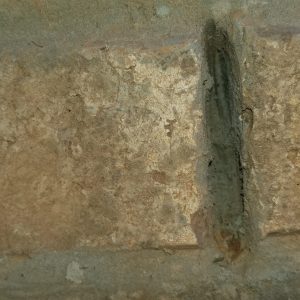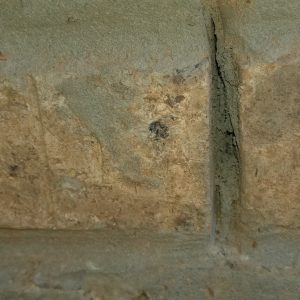I am in north louisiana and have recently moved into a new build. I recently noticed the weep holes around my house are half full of mortar and it does not seem as water will be able to drain from it. Should the weep holes be completely clear of mortar? It seems they were an after thought and the workers just scooped out the mortar with their trowels to give the appearance of weep holes.
Do these look correct?





















Replies
Yes, the mortar should be completely cleared out of the vertical joint, all the way back to the air cavity and/or drainage plan. These should be spaced apart roughly 16" - 24" on center from each other.
Those are not weep holes, or at least don't look like anything. Do you more pictures that are a little further away? Typical weep holes are: cotton string, plastic tubes or plastic cell vents. There are other kinds, but depending on the type of cladding will narrow down the appropriate ones.
Here is a picture of the "holes" from a distance and the same close up. I know we are supoosed to have weep holes, but I'm not sure they know exactly what they are.
To confirm, this isn't thin brick veneer, correct? The reason I ask, because the base of the brick is missing a couple of things, other than proper weep holes. See the attached base wall detail of brick.
If this is thin brick, directly adhered to the foundation wall and stud wall, then you should have a "weep screed" directly under the brick and that would be it for the base. See attached detail for thin brick.
Like pkrivanec711 noted -
It might be hard to tell but maybe check around the entire house for a sign that there is in fact a brick ledge, or another sign could be the through-wall flashing, sounds like its a spec house so they'd probably use that black 6mil poly, sometimes you can see the edges of it at the very bottom of where the mortar meets the slab that they didn't trim off 100%
If you can verify this isn't a thin-brick, & there are no weep holes that's a massive problem that you can without a doubt have that fixed as that is a code requirement.
*If there is no airflow between the structure & masonry the sheathing & framing will deteriorate.
Just an update. I did find evidence of the flashing.
I also received a letter from a local structural engineer quoting the building code and threatening to report them to the Louisiana board of contractors. As I result, they got in touch immediately. They say they are going to come clean the mortar out of the weep holes. Im concerned it will be the same careless knuckleheads and they will damage the flashing and wrap. Is there a safe way to clean them out?
Here is a link to a video that shows how it can be done. Take photos of the before and after to make sure they don't crack the brick during the process. The important thing is they need to get all the way through to the mortar net/brick cavity.
Please provide photos of the completed work.
https://youtu.be/Dqzd35IDOTM